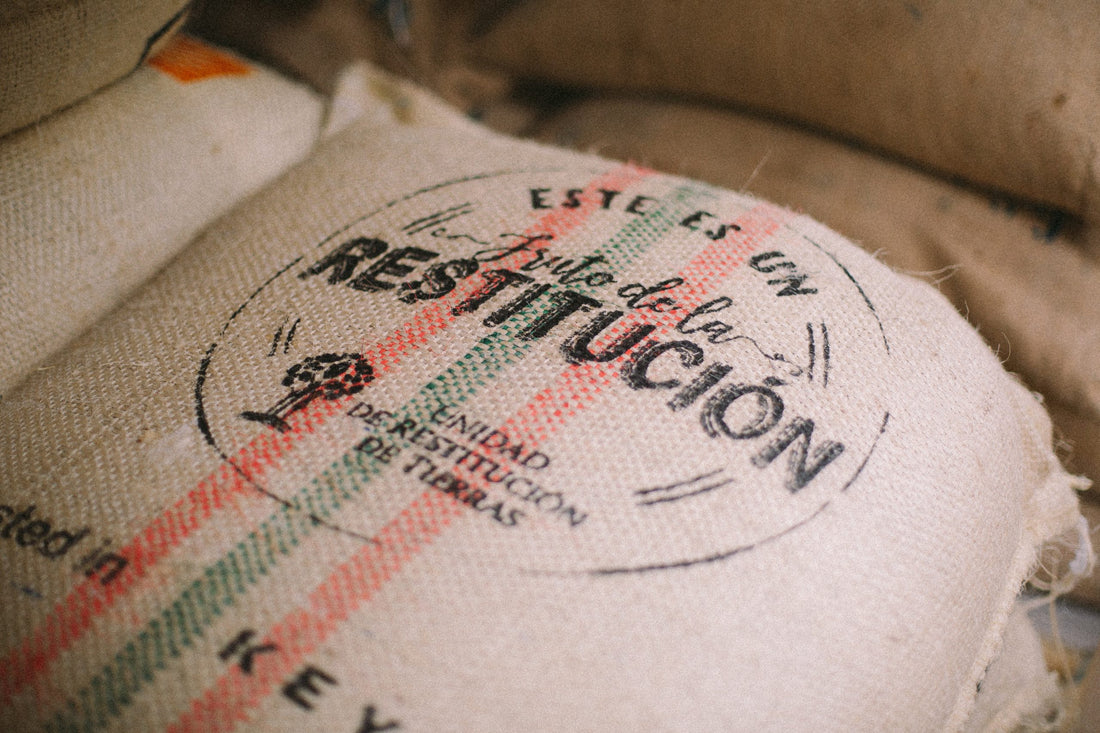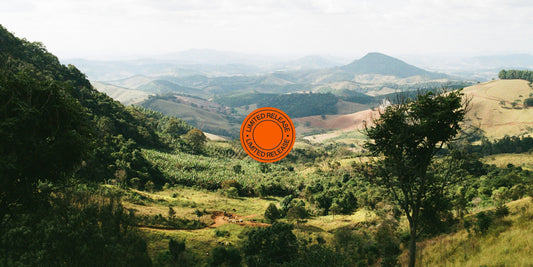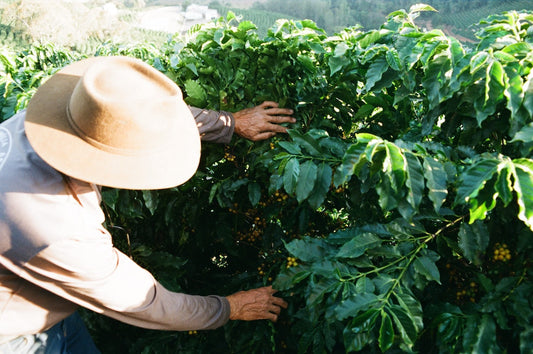
Around the World in Coffee Part 2: Colombia
Yup, we’re still touring South America on our coffee odyssey of the world, and we’re having a great time. We should do this more often. It’s off to Colombia this week.
Following on from last week’s blog all about coffees from Brazil, we’re now going to hop across the border to tell you all about Colombian coffee production. Aaah Colombia. You’re in for a right treat. It’s one of our favourite coffee producing countries. Got your trusty Colombian coffee to slurp on whilst you listen to us drone on? We hope so.
On the list of main coffee producing countries, Colombia comes in at a pretty respectable third place, producing roughly 810,000 metric tonnes of coffee a year. A fair effort when you consider that Colombia is seven times smaller than the world’s leading coffee producer – Brazil. That’s right, seven times smaller! That’s even blown us away a bit. Is your coffee still firmly in your cup and not all over your computer screen?
GROWING/HARVESTING COFFEE IN COLOMBIA
What’s more interesting though, is that Colombia doesn’t just produce large volumes of coffee, they produce some of the highest quality coffees in the world; growing mainly Arabica. Due to the mountainous topography and relatively poor infrastructure of many growing regions in Colombia, cherries tend to be handpicked during harvesting (unlike Brazil where coffee trees tend to be “strip-picked”). You might think that’s a bad thing, but hand-picking is the easiest way to increase the quality of coffee. Humans can do what machines cannot – determine if a cherry is ripe and ready to pick. Harvesting may take longer as a result, but the quality is far higher when harvested in this way, meaning that producers can charge a premium for their crop.
Pretty early on, Colombia realised the importance of marketing. In 1927 the National Federation of Coffee Growers of Colombia (or NFC for short) was founded, whose aim was to promote production and exportation of Colombian coffee. They introduced a fictional coffee farmer called Juan Valdez who, along with his equally fictional mule – Conchita – became the poster boys (actually I think Conchita was a girl, but whatever) of Colombian coffee. Even today the FNC continues to use the image of Juan Valdez and it’s internationally recognised as a mark of 100% Colombian coffee. This rather impressive marketing tactic helped cement Colombia’s status as a top-class producer and set itself apart from other coffee-producing countries.
We should also mention here that – similar to Brazil – Colombia has a pretty idyllic climate for growing coffee, which adds to the quality of the crop. What makes Colombia so unique though is that it harvests coffee pretty much all year round. This is due to the various micro-climates that exist throughout the coffee growing regions. From Antioquia in the North to Nariño in the South (and everything in between), there’s always a region that’s harvesting coffee at any given time of the year.
However, it’s not just about the climate. Colombian coffees tend to be grown on steep slopes and often benefit from the shade produced by surrounding indigenous plants, protecting the cherries from the midday sun.
WHAT DO THEY TASTE LIKE?
Historically “Colombian” coffee stood for smooth and mellow flavours that weren’t too offensive (just ask your parents). Nowadays though we know Colombia is capable of so much more. Colombian coffees are incredibly diverse in the cup, with each growing region bringing something different to the table. From ultra-rare varieties to some of the most experimental processing methods, Colombia has it all.
They are among some of the yummiest coffees we’ve ever had a chance to taste here at the roastery – and our Colombia La Restitucion in our core range is no exception. This coffee has a bit of an interesting story too. It’s part of a community project that reinstates farmers who have lost their land due to forced abandonment, displacement or dispossession during the long-standing conflict with the militant group/legitimate political party FARC. The project not only helps farmers recover their farms but through various initiatives, encourages better sustainability and quality. This was another coffee that was a one-off release (in our three-tier range) that we loved so much we decided to make it part of our core range. Our decaf also happens to be a great Colombian coffee, with notes of honey roast peanut, pear drop and melon.
We just love how Colombia seems to be able to produce knockout results, with a consistency in quality. So whether you’re looking for a solid, washed, every-day coffee, or a double anaerobic, natural Gesha, the chances are that you’ll be able to find something very high quality and delicious from Colombia.




